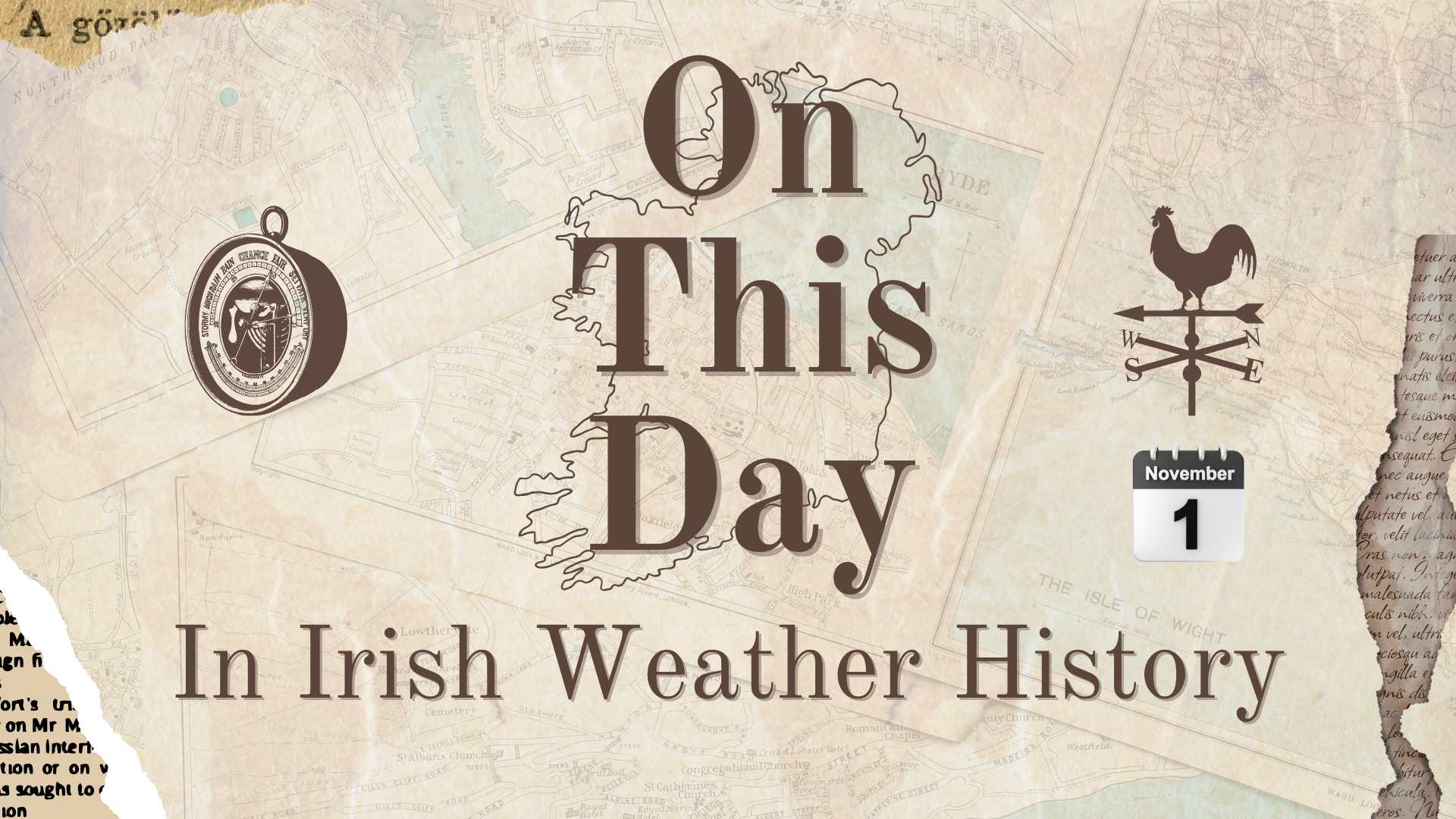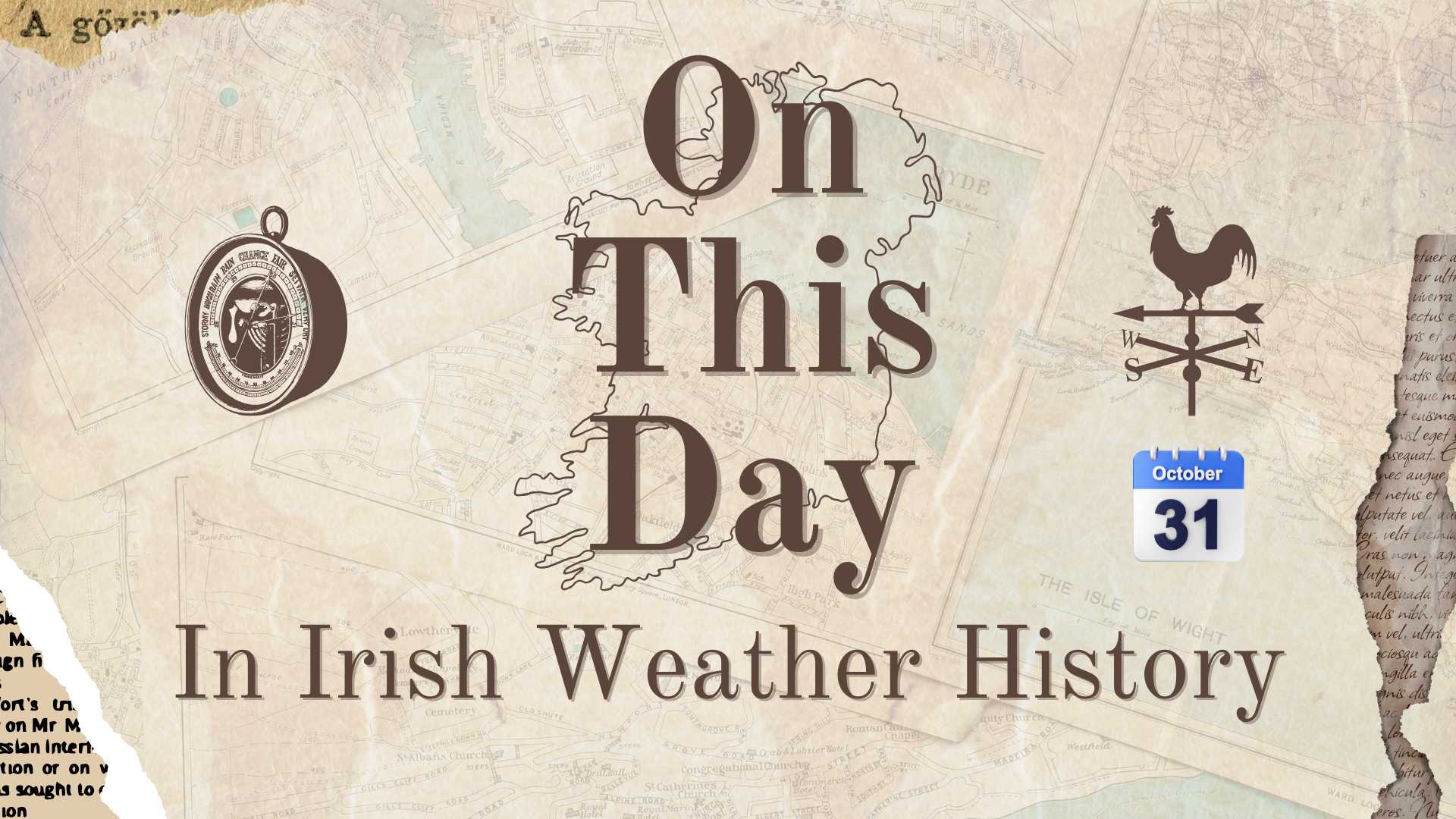
On This Day (15 May) in Irish Weather History

A chronological record of weather events and extremes that occurred in Ireland on 15 May down through history.
1894: A 3,000-ton ship en route from London to Philadelphia is demasted near Galley Head in West Cork during what the captain described as “an easterly hurricane, with mountainous seas.” The badly damaged vessel is towed to safety in Queenstown (Cobh).
1909: Seven steamships carrying 2,000 first-class passengers depart New York for Queenstown (Cobh) in the ‘Great Ocean Race’, which is eventually won by the American liner New York. The liner is also remembered in maritime history for nearly colliding with the Belfast-built RMS Titanic as the latter ship departed on her maiden voyage three years later in 1912.
1915: Allied offensive action during the Second Battle of Ypres is suspended due to torrential rain in Flanders. The battle eventually claims the lives of 50 members of the Royal Irish Fusiliers, with 148 others injured.
1916: Kerry man Tom Crean, along with Ernest Shackleton and Frank Worsley, embarks on the first documented crossing of South Georgia, a feat that was a crucial part of Shackleton’s rescue attempt following his voyage on the Endurance.
1925: Fine weather leads to a record turnout for the RDS Show at Ballsbridge in Dublin, which is attended by W. T. Cosgrave, President of the Executive Council of the Irish Free State.
1929: The Graf Zeppelin flies over Ireland on its second voyage from Berlin to the United States. A young female gorilla called ‘Susi’, destined for Chicago Zoo, is on board.
1947: The Minister for Lands tells the Dáil that the unprecedented wet weather of 1946 had resulted in tree-planting targets not being met for the current year.
1953: An RAF Shackleton weather plane overshoots the runway at Aldergrove Aerodrome in Antrim. The crew of seven escapes uninjured.
1959: The Irish Times front page reports that a ‘freak thunderstorm’ causes the abandonment of a number of races at The Curragh, including the 1,000 Guineas.
1965: The Irish Government confirms that the British Royal Navy is to undertake hydrographic surveys of the Atlantic Ocean in the northwest of the country and will be based at Moville in Donegal.
1970: A 19-foot-long British midget submarine discovers wreckage of the Aer Lingus Viscount aircraft which crashed near Tuskar Rock lighthouse in Wexford two years earlier.
1971: The Met Office announces that the weather is expected to remain mostly dry “for the next 30 days” with above-average temperatures across Ireland.
1982: ACOT, Ireland’s farm advisory and education organisation, says the ongoing dry spell has led to grass shortages and increased stress on tillage crops.
2000: The European Space Agency announces plans to introduce high-altitude airships to European skies to carry aloft equipment for atmospheric and meteorological research.
2016: Straide in Mayo registers the month’s lowest grass minimum (-6.6°C).
2019: The month’s highest air temperature (21.9°C) is recorded at Mount Dillon in Roscommon.
Share this WeathÉire story:







